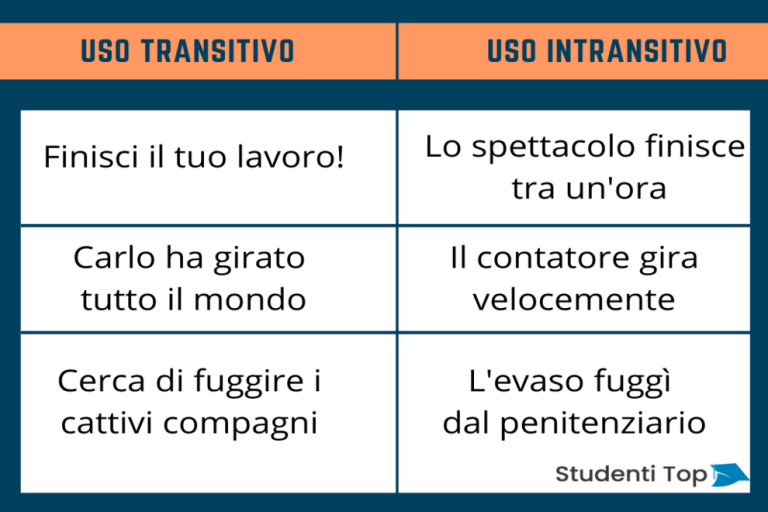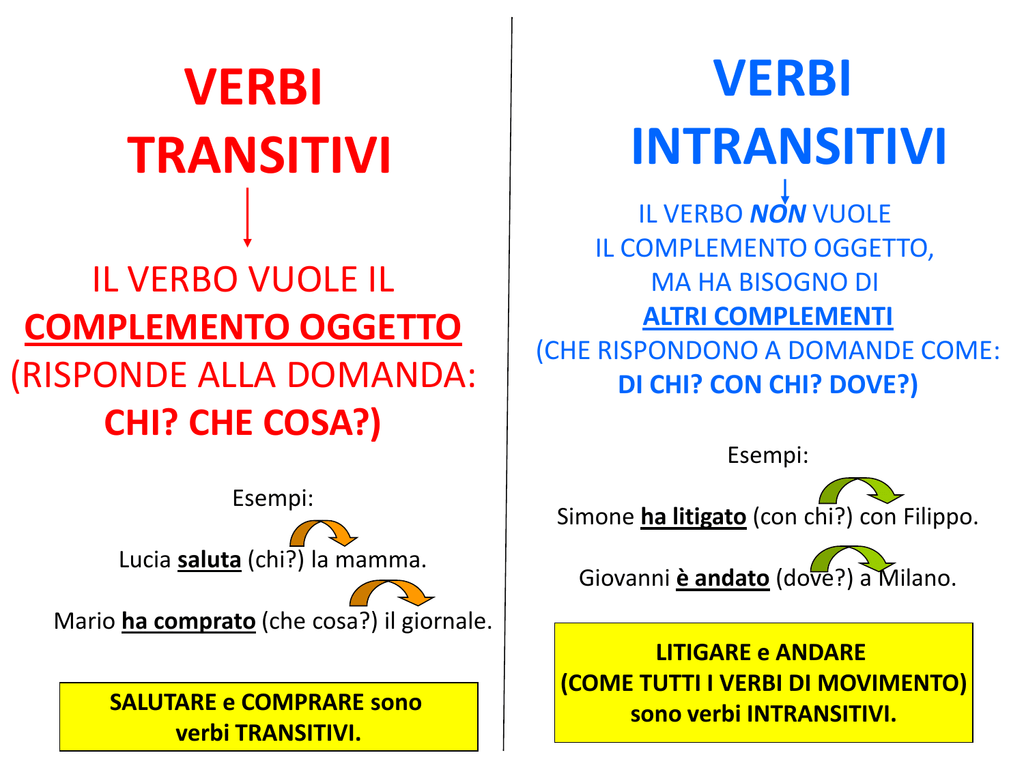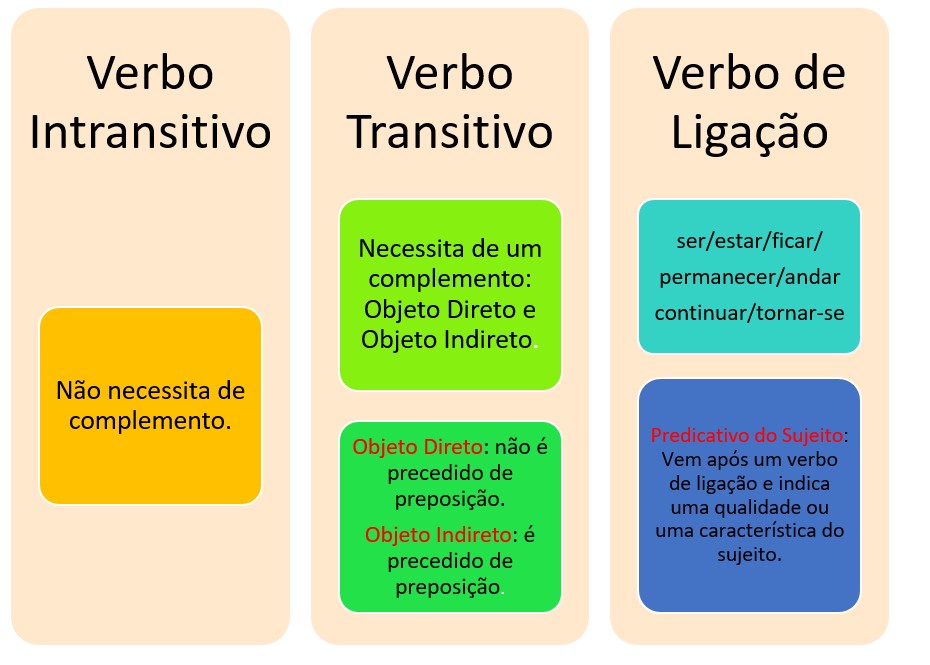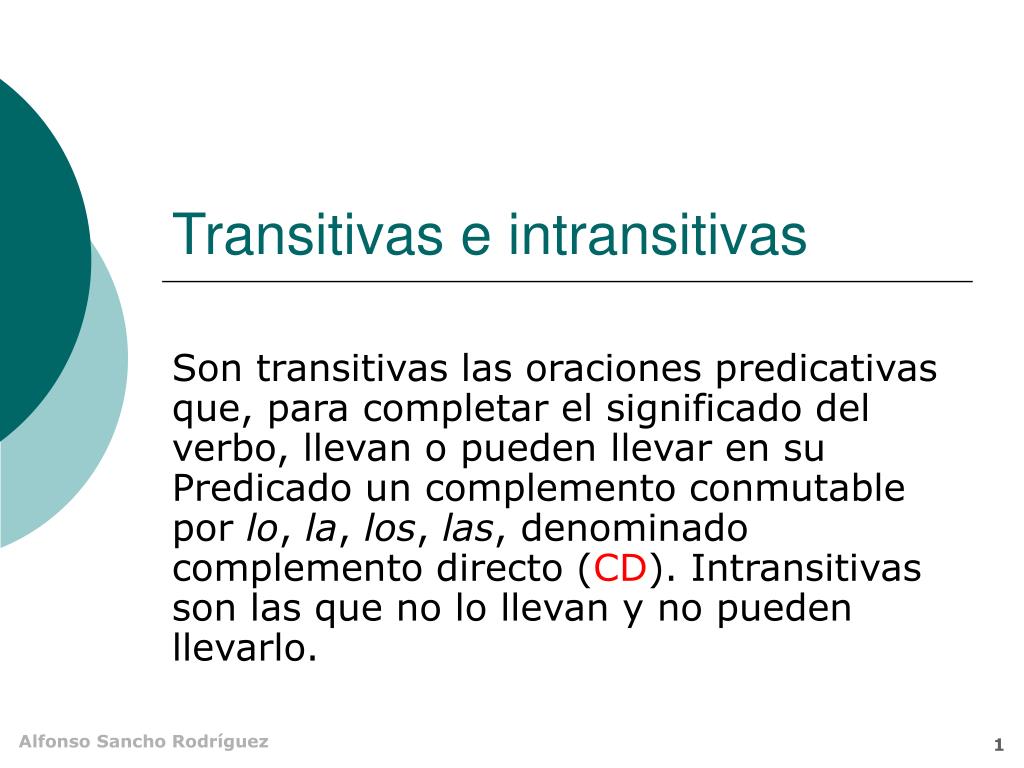
Oraciones transitivas e intransitivas YouTube
There's no object.) The children are sleeping. (The subject is 'the children' and the verb is 'are sleeping'. There's no object.) John ate the pizza (transitive). John ate (intransitive). Also, some verbs that have more than one meaning can be transitive or intransitive depending on which meaning is being used.

Oraciones transitivas e intransitivas YouTube
Transitive verbs are verbs that use a direct object. Intransitive verbs are verbs that do not use a direct object. A verb can be described as transitive or intransitive based on whether or not it requires an object to express a complete thought. A transitive verb is one that makes sense only if it exerts its action on an object.

Verbo transitivo versus verbo intransitivo Qual a diferena
Transitive AND Intransitive. Some verbs with multiple meanings are transitive or intransitive depending on their usage. The verb 'run' is a good example. When used in the sense of physical exercise, 'run' is intransitive. Helen ran every weekend when she was at college.

Verbi transitivi e intransitivi cosa sono e come si utilizzano? Studenti Top
t. e. In grammar, an intransitive verb is a verb whose context does not entail a direct object. That lack of transitivity distinguishes intransitive verbs from transitive verbs, which entail one or more objects. Additionally, intransitive verbs are typically considered within a class apart from modal verbs and defective verbs .

Verbos TRANSITIVOS e INTRANSITIVOS YouTube
Verbs can either be transitive or intransitive. Transitive verbs must have a direct object to complete the thought. Intransitive verbs do not have a direct o.

Verbo transitivo versus verbo intransitivo Qual a diferena
They mean: "verb transitive" or "verb intransitive.". At Dictionary.com, you'll find this technique: "verb (used with object)" and "verb (used without object).". The first, of course, means "transitive verb," the second "intransitive verb.". Let's look at a few verbs that are always intransitive. Try out the trick.

Atividade Com Verbo Transitivo E Intransitivo EDUCA
The way you use a verb makes all the difference in determining if it is a transitive or intransitive verb. Learn what these terms mean, with examples, here.

Transitiva och intransitiva verb YouTube
In the following sentence, conveyed is an example of a transitive verb and a message is the direct object. She conveyed a message. Rise is an example of an intransitive verb. The sun rises every morning and sets every night. Some verbs can be both transitive and intransitive. She opened the door.

TOMi.digital ORACIONES TRANSITIVAS E INTRANSITIVAS
Therefore, verbs such as to be, to feel, and to grow and all their forms cannot be transitive verbs, which will be under the intransitive verbs section. Second, a transitive verb always needs to relate to the object in a sentence. To understand what that means, let's break down the fundamentals of sentence structure.

Atividade Verbo Transitivo E Intransitivo EDUCA
Knowing if a verb is transitive or intransitive helps learners to use words correctly and improves grammar accuracy. To understand what transitive and intransitive verbs are, it's first necessary to understand what the object of a verb is. Take a look at these two simple sentences: My mother likes tea. My mother laughed.

Happy Reforço Escolar Verbo Transitivo / Intransitivo / Verbo de Ligação
Transitive: Sally sent the birthday gift yesterday. Verb: sent Direct Object: birthday gift Intransitive: Sally went to Jack's birthday party. Verb: went Object: none How to identify transitive and intransitive verbs. Looking at the object of the sentence is the best way to identify if the verb in a sentence is transitive or intransitive.

Oraciones transitivas, intransitivas e impersonales Xmind Mind Mapping Software
Transitive Or Intransitive. October 25, 2017 -. State whether the verbs used in the following sentences are transitive or intransitive. 1. Let's invite Bob and Sally. Invite is transitive. Invite is intransitive. 2. You have baffled me.

Examples Of Transitive And Intransitive Verbs Exercises With Answers
Example 2: The teacher gave me a new notebook. (subject / verb / indirect object / direct object) The teacher gave. The verb 'gave' in the above example is a transitive verb that needs an object. In the second sentence, 'The teacher gave' sounds incomplete without the indirect object and the direct object.

PPT Transitivas e intransitivas PowerPoint Presentation ID192920
An intransitive verb is a verb that doesn't require a direct object (i.e., a noun, pronoun or noun phrase) to indicate the person or thing acted upon. For example, the verb "yawn" is intransitive because it's not possible to "yawn" something. The opposite is a transitive verb, which must take a direct object. For example, a sentence.

Oraciones Transitivas e Intransitivas (II)
The BE verb is not transitive or intransitive. It is called a linking verb. Instead of following the subject + verb + object format, sentences with linking verbs follow this format: The man is a doctor. [subject] + [verb] + [complement] Other linking verbs include appear, become, feel, grow, look, smell, sound, taste.

Verbo transitivo versus verbo intransitivo Qual a diferena
Some verbs can be either transitive or intransitive depending on how they're used. For example, we can use "sang" in both of the following: I sang "Happy Birthday" at the party. . I sang at the party. . Both sentences here are grammatical. In the first, "sang" is a transitive verb with "Happy Birthday" as its object.